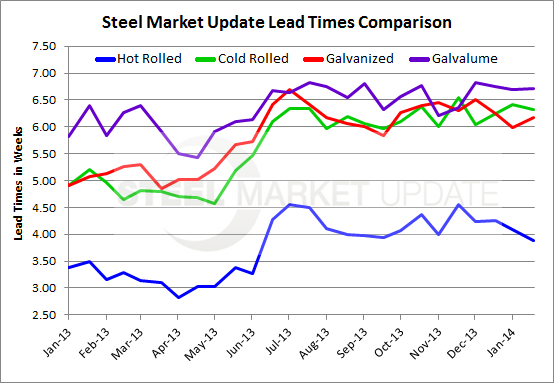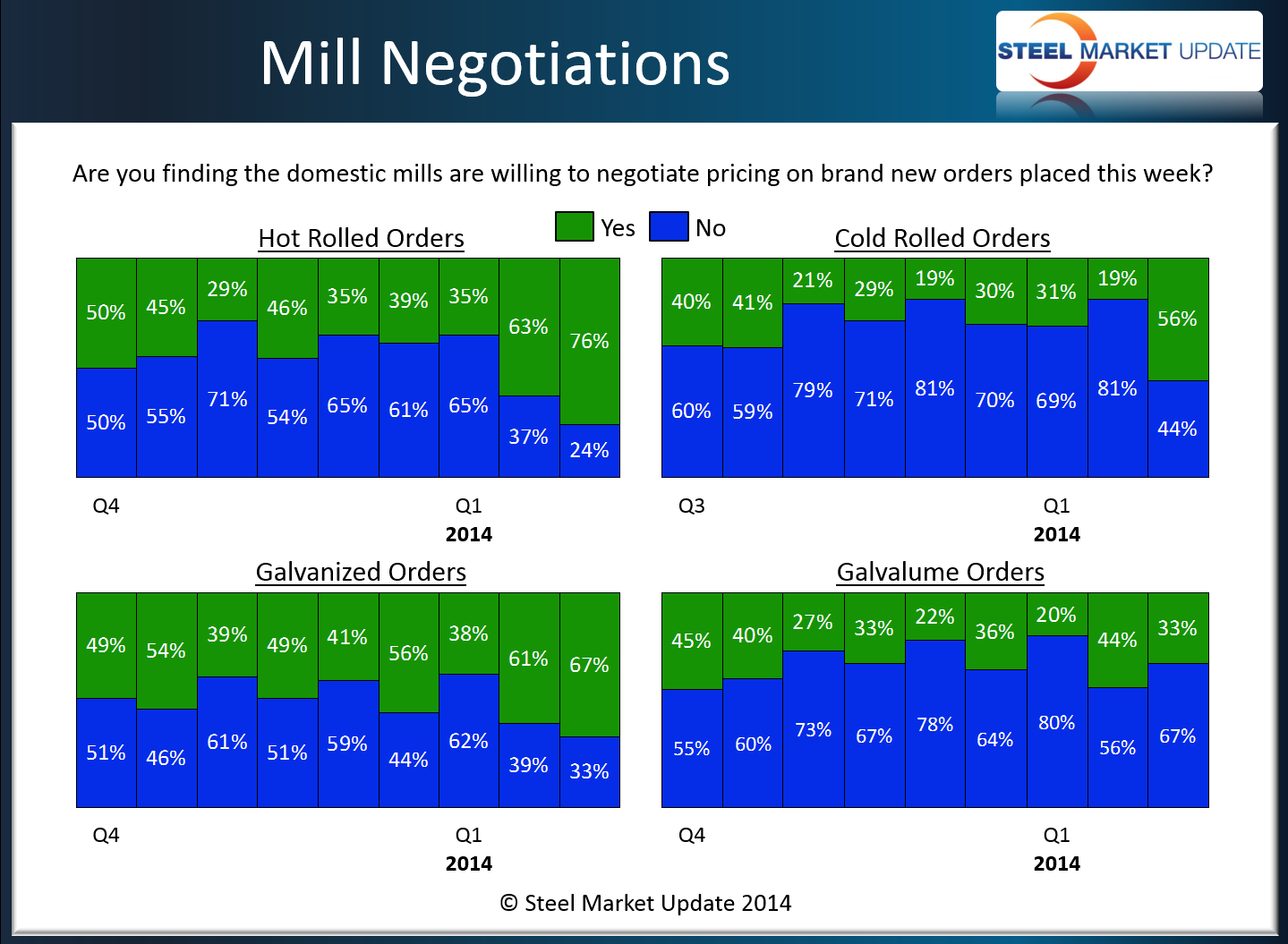SMU Data and Models

Lead Times Holding Their Own / Negotiations Not So Much
Written by John Packard
February 6, 2014
Based on the results of our steel market survey which we just completed this afternoon, lead times out of the domestic mills remained relatively constant compared to what we reported during the middle of January.
Hot rolled lead times slipped to 3.89 weeks (average) down from 4.09 weeks.
Cold rolled remained over 6 weeks at 6.32 weeks.
Galvanized also remained almost exactly the same at 6 weeks (6.18 weeks).
Galvalume also remained the same at 6.71 weeks.

Our respondents reported three of the four flat rolled products we are currently following, the percentage of the respondents reporting the domestic mills as willing to negotiate pricing on hot rolled, cold rolled and Galvanized increased compared to two weeks ago. The only item which showed less willingness to negotiate was Galvalume which dropped from 44 percent to 33 percent.


John Packard
Read more from John PackardLatest in SMU Data and Models

SMU Survey: Sheet lead times ease further, plate hits one-year high
Steel buyers responding to this week’s SMU market survey report a continued softening in sheet lead times. Meanwhile, plate lead times have moderately extended and are at a one-year high.

SMU Survey: Buyers report more price flexibility from mills
Nearly half of the steel buyers responding to this week’s SMU market survey say domestic mills are showing increased willingness to negotiate pricing on new spot orders. This marks a significant shift from the firmer stance mills held in prior weeks.

SMU Survey: Buyers’ Sentiment Indices fall
Current Sentiment Index dropped six points to +42 this week compared to two weeks earlier. It has fallen in every successive survey since reaching a 2025 high of +66 on Feb. 19.

March service center shipments and inventories report
Steel service center shipments and inventories report through March 2024.

Apparent steel supply contracts in February
The amount of finished steel that entered the US market in February receded from January’s peak, according to our analysis of Department of Commerce and American Iron and Steel Institute (AISI) data.
